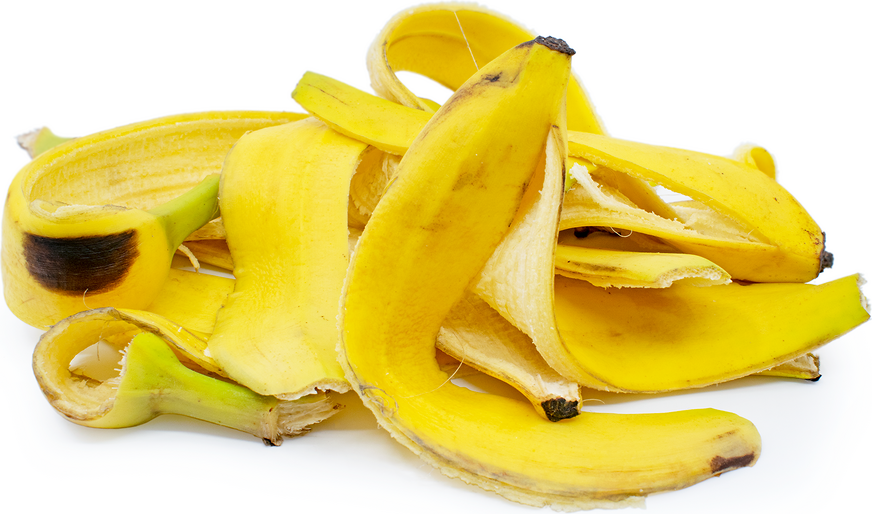


Banana Peels
Estimated Inventory, lb : 0
Description/Taste
Banana peels are the outer protective later of the standard yellow banana. Bananas grow in bunches of 6-8 bananas per bunch, and average 15 centimeters to 23 centimeters in size. The medium thick, signature yellow banana peel will ripen from a deep green in color, to yellow, and eventually freckle with brown spots, until eventually turning entirely brown. The banana peel encases and protects an ivory cream colored, semi-starchy flesh. Banana peels are fibrous and thicker when unripe, but become thinner and sweeter as they ripen.
Seasons/Availability
Banana peels are available year round and widely accessible.
Current Facts
Bananas belong to the genus Musa, which includes both bananas and plantains. Chefs around the world who are focusing on a no-waste movement in the restaurant industry and using banana peels as staples on their menus. Chef Davin from Wrench and Rodent in Oceanside, California, offers Banana Peel Taco, or as an addition to smoothies
Nutritional Value
Banana Peels have significant amounts of fiber, vitamin c, vitamin b-6, potassium, and magnesium. Banana Peels are also rich in the antioxidant Lutein, which has been known to protect and enhance eye health, and Tryptophan, which helps the body produce serotonin.
Applications
Banana Peels can be used in both cooked and raw applications, such as frying, baking, braising, roasting, or adding into smoothies. Traditional recipes using Banana Peels include curries, chutneys, and a Keralite dish known as Thoran, which often uses cabbage, coconut and curry leaves. Banana Peels can also be used to make banana peel vinegar, or to brew tea.
Ethnic/Cultural Info
Banana Peels have been traditionally consumed by cultures around the world for centuries. Banana Peels have also been known to have medicinal uses, such as relieving headaches, or relieving the itching from poison oak or a mosquito bite, and even reducing the appearance of wrinkles. Just rub the inside of the peel on your skin for 10-15 minutes to feel relief from discomfort.
Geography/History
Bananas are native to Southeast Asia, reaching as far south as northern Australia. Archaeological evidence suggests they were cultivated in Papua New Guinea as long as 5000 BCE. They were brought west by Arab conquers in 327 B.C. and moved from Asia Minor to Africa and finally to the New World. It was in 1899 that bananas became a widely recognized fruit, when the United Fruit Company set up business in the U.S. Bananas are currently the worlds fourth largest fruit crop.
Recipe Ideas
Recipes that include Banana Peels. One
Podcast




